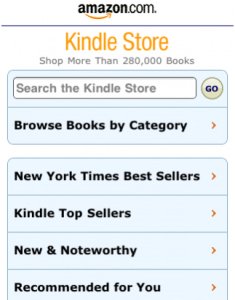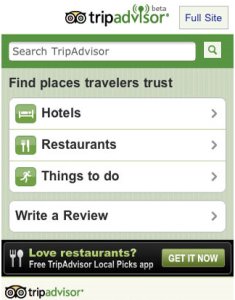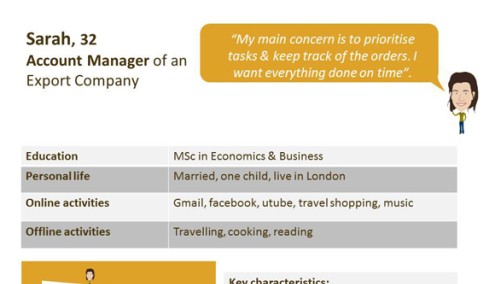Posts for June 2011
Do we need any more domain names?

Some domain name extensions (Image: querkmachine on Flickr).
Domain names are about to get more interesting. Or, depending on your viewpoint, more complicated. That's because ICANN - the organisation that administers then - has decided that we need more domain name extensions.
ICANN's decision means that as well as having .co.uk and .com, from 2013 we could start to see .apple, .london, .microsoft and more.
The biggest ever domain name shake up
In a move that's probably the biggest shake up of domain names since they were invented, organisations and companies will be able to propose the creation of new domain extensions - of any length and in any language that ICANN recognises.
They'll have to make a good case as to what the domain extension is for and how they'll use it. And at $185,000 a pop, it won't be cheap to set one up. But the attraction in terms of branding is obvious. Give it a couple of years and your Facebook profile could well live at http://yourname.facebook.
Other companies are bound to see a business opportunity here, creating up new domain name extensions and then selling the domains on.
Who knows, maybe someone will set up an extension for small businesses. Would you buy a domain name ending in .smallbiz or .boutique? Or if someone created one for your area - like .london or .bristol - would you use it?
Haven't we been here before?
We've been here before. My fellow blogger, Martin, covered this a good while back. Just this time round his warnings of .cockney or .cheese don't seem so far-fetched.
Sure, this domain name liberalisation is great for big businesses who can afford to put their own name after the dot. It's great for any companies who make money out of selling on the new domain names.
And it's great that it'll be possible to have domain names in other alphabets - Arabic and Cyrillic, for instance. Until now, the world wide web has been distinctly biased towards languages which use the Latin alphabet.
But for your average small business in the UK, will it make much difference?
There are already lots of other domain name extensions out there. You can pick up a .biz, .info, or .tv. But would you rather have one of those over a .com? When was the last time you saw a real, credible business using a less-popular domain name extension?
Exactly. It'll take an awful lot for any new domain name extension to unseat .com and .co.uk in terms of credibility. And that's why I wonder whether this domain name revolution is quite as exciting as it sounds.
Where to find IT freelancers

Maybe not the best place to find freelancers (Image: lhourahane on Flickr)
I recently wrote on the Start up Donut about the rise of the IT contractor and how it can turbo-charge your business.
The reaction to the post was interesting. I had a number of people contacting me via Twitter, both to agree and strongly disagree with my point of view.
The most interesting comments were from people who are considering moving into the contract world, which surprised me. It seems 2011 really is the year of the self-employed. However, based on those comments it's clear moving into the freelance world isn't quite as easy as it seems.
Someone who has just made the move tells me the key is organisation and learning the difficult skill of keeping existing customers happy while lining up new projects. It's a balancing act that many get wrong, leading to feast or famine scenarios which are both stressful.
So what tools are available to help businesses which are looking for help with an IT project connect with suitable freelancers? In my original post I mentioned Freelancer.com as a great place for businesses and freelancers to connect, but there are others I’ve tried:
- Elance
The site is tailored to both businesses and contractors in equal measure. The main plus point for me is that it includes a great project management area that really helps ensure good communication. - 99 Designs
I used this site recently for some graphical work. It allows business owners to run competitions for projects, such as designing a new logo. On my particular project I had 67 entries, all to a high standard. - oDesk
I really like oDesk and for short term contracts I think it makes a lot of sense. Its approach is simple: it takes a 10% cut of all payments going through the system and gives business owners and contractors a powerful marketplace and application to use as they see fit.
As someone who has hired multiple freelancers, the first piece of advice for anyone in the freelance world is to remember why you made the move. 99% of the time it’s to focus on something you're either highly skilled in, or passionate about. However, setting up and running your own business often requires you to do a fair amount of the mundane, creating business processes and doing admin.
The good news is IT can really solve this riddle. There are a number of tools and services available online that can take the pressure off. I’ll go into those in my next blog. Meanwhile, if you have some favourite sites to find work or hire good techies, then let us all know in the comments.
Ben Dyer is the Director of product development at SellerDeck
Mobile website or mobile app: what's the difference?
How does your company website look on a mobile phone? With more and more people using the internet on the move, it's important to cater for people who are on mobile phones. If you don't you could be annoying visitors to your site or even missing out on sales.
But there are two main ways to cater for mobile users. You can create a version of your website that's designed for the small screens of mobile handsets. Or you can build a mobile app - a small program that people can download and use on their phone.
To help you understand the difference between the two, we've created this infographic.
(See it full size in a new window.)
Has your business started thinking about how mobile users can access your website? Leave a comment and let us know what you decided to do.
Laura Hampton works for Zabisco. Read the Zabisco blog.
How do you see your IT running costs?
We've decided to experiment with creating some video blogs. For our first, Craig Sharp from Abussi looks at IT running costs. Are they an investment, or a necessary evil? Once you've watched it, please use the comments to let us know what you think. We've put a full transcript of the video beneath it.
You can also download the audio in MP3 format for listening on the move.
Video transcript:
"Hi, this is Craig Sharp. Today's short video blog has been prompted by the recent IT donut article, How to cut your IT running costs."
"I think the key thing about IT running costs is to consider whether you're looking at them as a cost, or as an investment. There are many people who feel IT is a cost they have to bear, that there's no alternative, and that this is something they have to pay a lot of money for."
"Some of that's true, but I think it depends on your perspective as to how you deal with the costs that come with having your IT system. For me, it seems an investment, mainly because you're investing in a platform that's going to be the basis for your entire business. Therefore, you want it to be reliable and to not hinder your ability to work."
"Sometimes skimping on costs can result in problems which actually make you very ineffective and inefficient - and that ultimately can lead to problems with your business."
"The other things to bear in mind are fairly straightforward. The article pulled out that cloud computing can often save money. That's true."
"Cloud computing is a new service which allows you to take some of the services running inside your business - often on computers which are using electricity and incurring costs - and puts them in a cloud solution, which means you don't have that responsibility any more. You just pay a small monthly fee."
"Those kinds of issues are worth considering when you want to reduce costs."
"I'd certainly urge you to go and look at the article about how to cut your running costs. It's a good starting point on where to begin with making your IT more of an investment. Thanks very much."
If there are any questions you'd like to see Craig answer in a future video blog, leave a comment and we'll do our best!
Switching off from email in the always-on world

Put the smart phone away! (Image: Gulltaggen on Flickr)
With laptops, smartphones and other mobile devices, your email is always with you - wherever you are. So how can you get away from it without appearing rude to people who expect an instant response? Is it even realistic to always be available?
It's interesting that most surveys, including my own, show that we stay connected not so much because people expect us to be available but because we think they expect us to be available. That reflects either our inability to switch off and delegate, or an equally worrying 'email addiction'.
To check your level of email addiction use my email addiction tool.
The key to surviving in this 24/7/365 world of business is to manage people's expectations. Here are five ways to take time off from email:
- Check your level of email addiction to make sure your reluctance to switch off is not driven primarily by your own assumptions rather than other people's expectations. More on how to deal with addiction in a future column.
- Use your out of office message no matter whether you're away on business or holiday. Set a safe, simple message saying you are out of the office with limited email access. Offer a point of contact for urgent matters and a date when you will reply. Make this the day after you actually get back, so you have time to catch up.
- Ask someone else to manage your email whilst you take a break. If you're a one-person business or don't have someone you can ask, consider using a virtual PA service.
- Lock your smart phone away and take a conventional mobile phone with you which only handles voice and text messages.
- If you do take a smart phone or laptop with you, only check your email once or twice a day - preferably at the end of the day. At all other times, shut down your email software and turn new message notifications off.
We all like to think we are indispensible but at the end of the day most of us need time to recharge our batteries and switch off. Staying switched on around the clock has been shown to reduce our overall effectiveness - and never mind the health implications!
Be honest. Ask yourself if there's ever been an email which would cause a disaster if you didn't deal with it immediately. For most of us, the answer is no. And that means there are alternatives to always being connected.
For more ways to take time out without jeopardising your business and professional image either go to one of Dr Monica Seeley’s ninety minute Brilliant Email Master Classes or get a copy of her latest book, ‘Brilliant Email: How to improve productivity and save time’.
Optimising your business website for mobile phones
This is a guest post written by Jonathan Brealey, co-founder of web hosting and reseller hosting company Heart Internet.
An ever-increasing proportion of your website's visitors are coming from mobile phones. For example, in September 2009, just 0.02% of all UK web traffic originated from a mobile device. In January 2011 this figure was a staggering 8.09%, representing a growth of over 4000% (source: www.tecmark.co.uk). With the growing popularity of the iPhone and Android powered phones, this trend is only going to continue.
While you can continue to show your normal website to mobile visitors, you could proactively increase sales and revenue by optimising your website for mobile web browsers.
For example, most websites are built with a full-screen monitor in mind, often with a resolution of 1024 x 768 pixels or above. However, an iPhone's screen size is much smaller, at 320 x 480 pixels.
Mobile internet users don’t want to navigate a web page full of text, images or videos to find the information they need. Although your existing website is aimed at giving a full and comprehensive picture of your business, a mobile site should deliver immediate access to what matters most when on the go.
Top tips designing your website for mobile phones
- Use mobile website building software such as goMobi for quick set up plus automatic device detection.
- Alternatively, if you want to build it yourself, put the mobile version on a sub-domain (e.g. mobile.websitename.com) and send mobile traffic to that version of the site.
- Your visitors don’t want to scan pages full of information. They want to be presented with what they need as quickly and efficiently as possible. Identify the key content on your site and make that the most prominent on your mobile website.
- A lot of visitors will be accessing websites via a 3G connection, which tends to be slower than the broadband you have at home. With this in mind, keep images to a minimum so pages load quickly.
- Rethink your navigation. Pressing a normal blue text link can be tricky on a phone. Make navigation buttons and links large enough for fingers to press and don’t have too many on one page.
- Limit scrolling to one direction. You can do this by using a single column layout, reducing the amount of scrolling and pinching the user has to do.
- Don’t rely on Flash for any of your content. It will be fine on most devices, but it won't work on the iPhone. As the iPhone is the biggest selling smartphone, lots of your visitors are likely to be using one.
Some good mobile websites
A good way to start is to look at what people have been done before. It can give you an idea of what works and - importantly - what you can improve upon.
Here are some examples of leading businesses with mobile phone optimised versions of their websites:
What are your favourite mobile websites? And what plans do you have for yours? Leave a comment to let us know.
Does Google's Chromebook take the cloud too far?

Google's first Chromebook (Image: karlnorling on Flickr)
If you keep your fingers on the pulse of technology (so to speak) then you've probably already heard about the Chromebook, Google's latest attempt to take over the world change how we think about computers.
A Chromebook (there will eventually be several models, from different manufacturers) looks just like a bog-standard netbook. It's basically a small, light-ish laptop that's thin and has a good battery life. So far, so-so.
The Chromebook is a web browser
The real difference comes when you turn the thing on. According to reports, it starts up superfast (we're talking under ten seconds) and the first thing you see is a web browser. With the Google homepage on, we assume.
Other software? There isn't any. All you have is your web browser. And - of course - your internet connection, which is about to become more important than ever. Because with the Chromebook, everything is stored online, in the cloud.
You access everything on the internet. Your files, your applications, the lot. Want to check your email? Forget about installing Microsoft Outlook; you'll need to log in to your Gmail account (or your preferred email service).
Need to work on a document? Google would prefer you to use Google Documents, though you could also use Microsoft's Office 365 beta.
If you've ever been confused about what cloud computing means, the Chromebook is a great illustration of it in action. Virtually everything you do with it, you'll do online.
The Chromebook's weak link is your connection
You've probably spotted the flaw by now: what happens when you're not connected to the internet? Well, Google's own Chromebook page is keen to point out that not all is lost: 'many apps keep working, even in those rare moments when you're not connected'.
'Rare moments'? I wonder. Sure, some Chromebooks will have a built in 3G connection which means you don't need to be in a Wi-Fi hotspot to get online. But this costs extra - and as many netbook users will know, there are parts of the country where you'll struggle for any sort of signal at all, never mind a fast one.
Is the Chromebook right for business?
So, with all your files stored online, all your programs accessed online, and your web browser the only way you have of doing anything, is this taking cloud computing a little too far - especially for business use?
Well, although more and more companies are relying on the cloud to provide various aspects of their IT, it's rare to find one confident enough to move everything to the cloud. But that, effectively, is what the Chromebook does.
There are big management advantages. As Google's co-founder Sergey Brin puts it: "The complexity of managing your computer is torturing users. It's a flawed model fundamentally. Chromebooks are a new model that doesn't put the burden of managing your computer on yourself."
He has a point. I'd dearly love to never see another stupid dialog box urging me to update and restart my computer now. But I'm not sure I'm ready to sacrifice the control I have over my own data just yet. And I suspect a lot of other businesses will be feeling the same.
But then maybe they don't have to. As Google explains, you can 'run your browser-based apps instantly, whether in the cloud or behind your firewall, as well as apps virtualised through technologies like Citrix'. In simple terms, that means you can hook a Chromebook up to servers that you own or operate (your own 'private cloud', in effect). Any more tempted?
Chromebooks should be available from Amazon and PC World soon. We can't find UK prices yet, but they'll start at $350 in the US.
What do you think of the Chromebook? Would you use it in your business?
Five things meerkats can teach us about business IT

This is a guest post from Integral IT, a Yorkshire IT support company.
They’re the friendly faces of a website that frequently gets confused with a financial comparison site. What time they don't spend standing up on their rear legs, they spend sleeping or scrabbling about in holes. And lots of them live in the Kalahari desert.
However, you might be surprised to learn that we can learn a lot about business IT from meerkats too (is there anything they can't do?):
- Don't neglect the big picture. In a mob of meerkats (that's the correct collective term), you'll find one on the lookout, perched on a high point to watch for danger in the surrounding area. Similarly, you should ensure that someone in your company has responsibility for making sure any changes to your business IT fit your overall plans.
- You sometimes have to hunt for the best nuggets. Meerkats dig around in the desert looking for beetles, spiders and other tasty treats. In the same way, proper research can reveal software, hardware and other IT stuff that makes more sense for your company than the obvious choices.
- Keep your options open. A typical meerkat burrow can have 70 exits, giving them plenty of routes to escape from predators or cope with a cave in. The same goes for your business IT: don’t have any single points of failure. Take regular backups and get expert advice on how to keep your data safe.
- Ask the experts for help. Meerkats are sociable and live in colonies of up to 30 animals. They even teach each stuff (really – it says so on Wikipedia). In the same way, your business IT will benefit if you don’t try and go it alone. Ask other companies like yours for advice and find an IT supplier you can really trust.
- Meerkats aren’t toys. In fact, they're disastrous pets, and like to bite people. The same goes for business PCs. They’re for business use, not for messing around. So you need to make sure nobody does anything that could result in a crash or cause security problems - like installing dodgy software.
The cloud has a silver lining

This is a guest post from HP Business Answers. Check out our website, blog and Twitter feed. You can also join the HP Business Answers LinkedIn group for conversation, advice and expert tips.
There’s a fair weight on the shoulders of the UK’s small business community. Frequently referred to as the ‘backbone’ of the economy, they now have the added onus of leading the recovery from recession. No pressure then.
But if there’s a silver lining, it may come in the form of cloud computing. It's been heralded as a true opportunity for smaller organisations to bounce back.
In a report from last year, K2 advisory predicted cloud computing would even give small companies an advantage over [larger] enterprises.
Getting behind the cloud computing hype
And this year’s Microsoft Cloud Adoption Study goes further, envisioning a more transformational future for cloud users. “I believe there is huge potential for cloud technology to accelerate both the business opportunities for the ICT industry as well as for SMEs in Europe,” says Klaus Holse Andersen, area vice-president of Microsoft Western Europe.
There’s still lots of hype around the cloud that makes it seem like a daunting prospect for small business bosses. However, reduced to its most simple form, it’s just the way companies buy IT.
It can give you IT on demand, offering a pay-as-you-go solution that could have a profound impact on our work culture, not to mention small business growth. Cloud computing has generally lowered the barriers to entry for new businesses, so there's little wonder it’s being heralded as the engine that will drive the recovery.
“One of the wonders of cloud computing is that, unusually, small businesses are among its early adopters,” says Andy Burton, the chairman of the Cloud Industry Forum, an industry body promoting best practice.
So far, companies tend to be moving backup, storage and back-office functions into the cloud. A fortunate by-product of this is that many businesses have improved their haphazard disaster recovery plans too.
But the cloud is also proving popular for email, especially if the company has a mobile workforce. In fact, hosted business email - along with cloud-based video-conferencing and VOIP - can give smaller businesses access to the kind of integrated communications that have been the preserve of larger companies until now.
Cloud computing opportunities
And it’s the collaboration opportunities that Burton believes hold the greatest value for small firms. While the cost benefits are important, an upcoming Cloud Industry Forum survey found financial savings tend to come second to collaboration benefits.
Small businesses are likely to push cloud computing into the mass-market, too. According to the Microsoft report, 39 per cent of over 3,200 small businesses surveyed expect to pay for one or more cloud service this year. The number of services small companies pay for will nearly double, with uptake accelerating as owner-managers upgrade their existing technology.
Barriers to cloud computing
And what about pitfalls? The ‘click-through culture’ and low cost of cloud computing can make you lazy about reading contracts. You can sign up for services in just a couple of minutes (if you have your credit card handy), but Burton urges buyers to consider thier requirements before buying.
There are also cultural and perceptual changes to overcome – according to Microsoft's research, most people are more comfortable with cloud services that are ‘local’. “People are concerned particularly about where data resides. So it’s important to understand your supplier’s approach to data storage,” says Burton.
Connectivity can pose a problem too. After all, you need an internet connection to use cloud computing, so it's important to understand if your connection is fast and reliable enough. Also, does your cloud computing provider offer a solid service level agreement? How will it behave regarding data transfer and security if you want to switch vendors?
The Cloud Industry Forum has codes of practice for providers, while cloud computing has even attracted the beady eye of the EU commissioner Neelie Kroes – a sure endorsement that it has arrived.
In all, the use of cloud computing is only likely to grow. Burton even sees a time when the workplace as a single entity dissolves. “The components are all there for something ‘transformational’, now it just has to come together.”
How to use personas in web design
As any designer or developer worth their salt will tell you, a successful website is based on an understanding of your end user. Today’s audiences are looking for far more than pretty pictures and a website that works – they want user friendly sites that give them access to high quality information in the easiest and most appropriate ways for them.
Personas are a tried and tested way of ascertaining not only who your audience is but their motivations, needs and expectations of your site. Personas guide creativity and implementation, creating a far more optimised user experience than that born of guess work and assumptions.
What are personas?
Personas are representative profiles of the people who may use your site. They provide a description of the typical users with photos, names and roles which bring them to life. Here's an example persona (view it full-size in a new window):
Personas primarily record the typical behaviours of those users and how they might use your site. As websites usually have more than one group of users, multiple personas are used to give a full overview.
The importance of a good persona
"Personas can deliver a gut check to many parts of your project – business requirements, visual design, or quality assurance - by providing insight into who your audience is and what their expectations and behaviours are," say Russ Unger and Carolyn Chandler in their book, A project guide to UX design.
A good persona will deliver on a number of levels:
- They can guide the project team, encompassing all the requirements combined with user needs
- They allow users' goals to be recorded
- They are the basis of websites which really cater for the needs of the end user, because they focus the design, build and content generation.
Personas should be based on an understanding of the end user, not on the opinion of the designer or developer. This means you need to do your research, perhaps in the form of focus groups, surveys or interviews. These should help you pick out details which you may not otherwise know about your target groups.
The research techniques you use will probably depend on budget and time constraints. The key is to find out as much as possible and use it to your advantage.
Generally, three to seven personas will adequately represent your target group – any more and you risk clouding your insight with useless divisions. Everything you put into your personas should have a tangible outcome for the project, with all insights being a guiding force for key sectors of the design and build.
How to create personas
- Give life to your imaginary users by giving them a name and visual image. Personal information like age, occupation, education, online activities, social comfort level, mobile comfort level and offline activities will all help.
- Avoid being narrative. Try to use bullet points. This helps you focus specifically on user characteristics. The purpose of personas is to make your life easier, not to add extra work to your project.
- Keep persona descriptions short. There is no need to list unnecessary information. Stick to factors which affect - directly or indirectly - user behaviour and project features.
- Avoid creating ideal users. You're creating a website to fit your personas, not personas to fit your website. People are demanding and their needs should be included in personas.
- Don’t forget to include the goal of your end user. Are they trying to buy something? To find information?
- Don’t create one persona that encompasses all your characteristics. Each persona should be realistic - make them a person who could conceivably exist in real life.
Laura Hampton works for Zabisco. Read the Zabisco blog.











